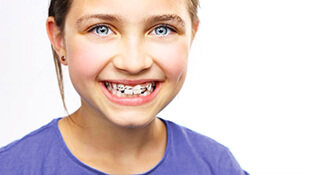.


Malocclusion, broadly speaking, is a term that dental health professionals use to describe the misalignment in a patient’s jaw. There are three classifications of malocclusion. The most common is Class 1, where only the teeth overlap with the lower teeth. It’s usually only slightly problematic and don’t have any issues with the actual bite.
The second is the overbite, which dentists and orthodontists refer to as retrognathism. This is when the patient’s upper teeth reach far over the bottom teeth. In addition to problems in social settings at school and disruptions in speech that can follow a patient late into life, the biggest concern for patients with retrognathism is their constantly chewing in such a way that is unnatural. Over time, this not only damages the teeth, but also the gums.
This damage to the teeth and gums happens because the human body has a structure to it. All parts must collaborate cohesively. When one part of the body, which in this instance is the jawline, deviates from this structure, it causes a domino effect to the other parts of the body. That’s why it’s so important for young people who have overbites to receive the orthodontist Paramus services they need early on.
The third class of malocclusion, as you may have guessed, is the underbite. This is the opposite of an overbite. An underbite is when the teeth and jaw on the lower half of the mouth stretch too far out and thus do not align with the teeth on top. This creates similar issues as does the overbite and is also important to address as early as possible.
Unfortunately, the most common culprit is one that leaves prevention completely out of your hands. Most often, teeth misalignment, or malocclusion, comes from your genetics. Have a look back at your and your partner’s childhood photos and you’ll get a better idea as to why your child has to deal with this burden for the next several years of life. The good news is that if you got through it, then so can your. What’s more is that that our knowledge and understanding of how to treat it has evolved quite a bit since you were a kid, meaning your child’s experience will probably be over a lot faster and will be a lot less uncomfortable than yours was.
Genetics is not the only cause, however. There are, in fact, a number of causes that are preventable with the proper discipline and foresight. For example, if the child develops an oral fixation due to over-dependence on a pacifier or from thumb sucking, this leads to degradation of the shape of the patient’s teeth, which in turn can cause misalignment. Granted, parenthood is tricky and sometimes it’s difficult to anticipate the subtle things that have consequences later. That said, the more conscious you are early on, the less you’ll have to worry about in the years to come.
Would you like to give your child a consultation about his or her malocclusion, or any other pediatric dental or orthodontic concerns? Contact the Pediatric Dental Associates in Ridgewood at (201) 652-7024 and ask about our orthodontist Paramus services today.